 Highland Peak Wild Horses
Highland Peak Wild HorsesOne Year Old Strawberry Roan Filly #8621
Captured 12/11/06
Highland Peak Herd Management Area, Nevada
Winning Bid $125.00 January 2007
Highland Peak Herd Management Area
BLM Ely Field Office – Nevada
The Highland Peak Herd Management Area (HMA) spans 137,975 public acres with a recently established maximum “Allowable Management Level” (AML) not to exceed 33 wild horses within the HMA. In 2003, this AML was adjusted downward from the previous 50 wild horses to help maintain the “thriving ecological balance” of one horse per 4,178 acres. (1)
BLM managers have just issued the final grazing authorizations for the Bennett Springs, Black Canyon, Klondike and Highland Peak livestock allotments, all found within the Highland Peak HMA, which approved forage allocations for sheep in the area totaling 8,985 Animal Unit Months (AUMs) while the Highland Peak wild horses were allotted only 396 AUMS, less than 5% of the available food. (2)
The Highland Peak livestock allotment itself had been vacant for several years, including in 2003 when BLM established the new forage allocations for the Highland Peak Herd. However, it was recently re-authorized in January of 2007 for 4,508 AUMs of forage dedicated solely for exclusive use by sheep.
Sixty-four Highland Peak horses were removed in December 2006 leaving an estimated twenty-five still within the HMA. (3)
A press release by American Wild Horse Preservation Campaign reported that after a local supporter had witnessed the wild horse removals, truckloads of sheep began arriving daily for over a month. (4)
BLM personnel confirmed that 6,600 sheep were authorized for grazing in the area but only about 2,200 were actually utilizing the allotments. (5) These numbers were for the all the grazing allotments within the Dry Lake Complex but based on the new forage allocations, the Highland Peak HMA area is only authorized for approximately 1,800 sheep.
On the national level, BLMs most recent estimate is “more than 29,500” wild horses and burros are being held in long and short term holding facilities to protect public lands from their "excessive populations". (6)
It’s good to know that BLM considers all captured wild horses and burros living in containment centers as “wild and free-roaming” until they have been sold or titled is transferred. This makes it a little easier to swallow the $20 plus million a year taxpayers are billed for feeding “wild” horses and burros while livestock operations only pay about $1.35 per month to feed the five sheep that replace each wild horse. (7)
It also helps BLM justify to Congress why the For Sale Authority must stay in tact to help reduce removal and containment costs - until inbreeding can finally finish the job.
(1) Dry Lake Complex Wild Horse Gather Plan and Preliminary Environmental Assessment, EA#NV-040-07-002, Department of the Interior, Bureau of Land Managment, BLM ELy Field Office, December 2006.
(2) Proposed Decision and Finding of No Significant Impact, Bennett Springs, Black Canyon, Klondike and Highland Peak Allotments, term permit renewals (EA#NV-040-07-21), Department of the Interior, Bureau of Land Management, Ely Field Office, Spetember 20, 2007.
(3) Dry Lake Complex Final Gather Report, Courtesy of Ben Noyes, December 2006.
(4) American Wild Horse Preservation Campaign, News & Alerts www.wildhorsepreservation.com
(5) Personal Email Communication, Ely Field Office, Received 2/2/07 12:44 p.m.
(6) Bureau of Land Management Website www.blm.gov Wild Horse & Burro Fact Sheet last updated September 2007.
(7) American Wild Horse Preservation Campaign, The Numbers, www.wildhorsepreservation.com

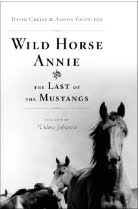



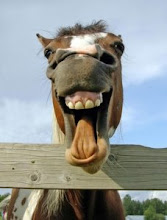




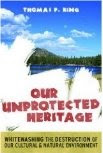



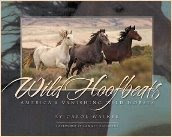




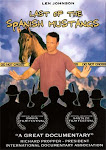





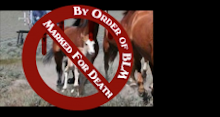
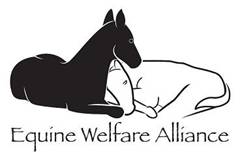
3 comments:
In the event anyone is interested,I am the proud owner of the red roan yearling from Highland Peak featured on this page. And for the record it is a yearling, not a filly. BLM mis-posted his sex. His name is Bodie. He is a wonderful little fellow. Next spring I will be sending him to Warm Springs for saddle training. I have another mustang I adopted 6 years ago who went through their training and they do an absolutely super job. I've owned various horses for the past 30 years and have come to the conclusion mustands are the best. To see recent pics of Bodie and Raven, the other mustang, go to MySpace/elfinoaks.com. Raven is from Wheeler Pass. Enjoy.
Oops....gelding, not yearling.
I have a mare from this round-up. Her name is Bella and I work with her daily with the guidance of a natural horsemanship trainer. I've had Bella about 3 months and she leads, backs, yields her hindquarters, lounges, has great lateral flexion, and drives from the rear. I am getting her ground work solidly done before I attempt to ride her. She does take a saddle without a problem and is the belle of my island. She also walks over tarps and will wear a tarp. I am working on desensitizing her to noises such as tractors, chainsaws, mowers, cars, etc. She is a superb horse and you ought to see her run. She is magnificent.
Post a Comment